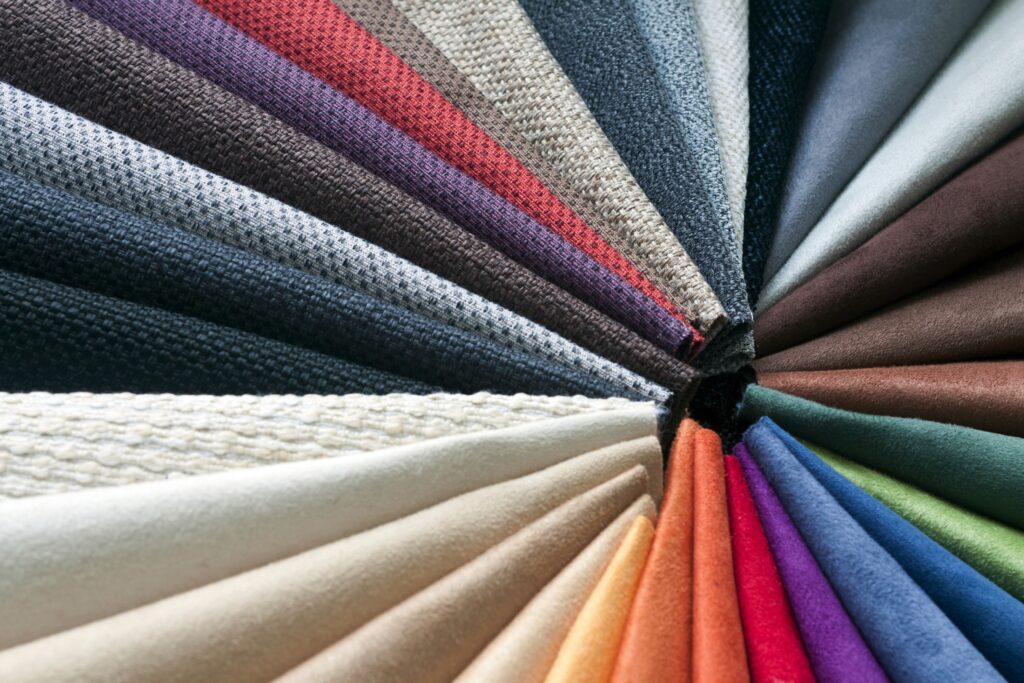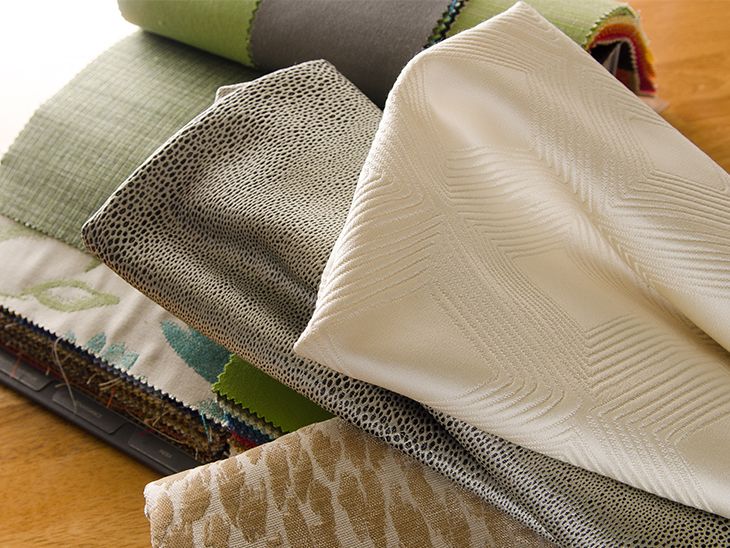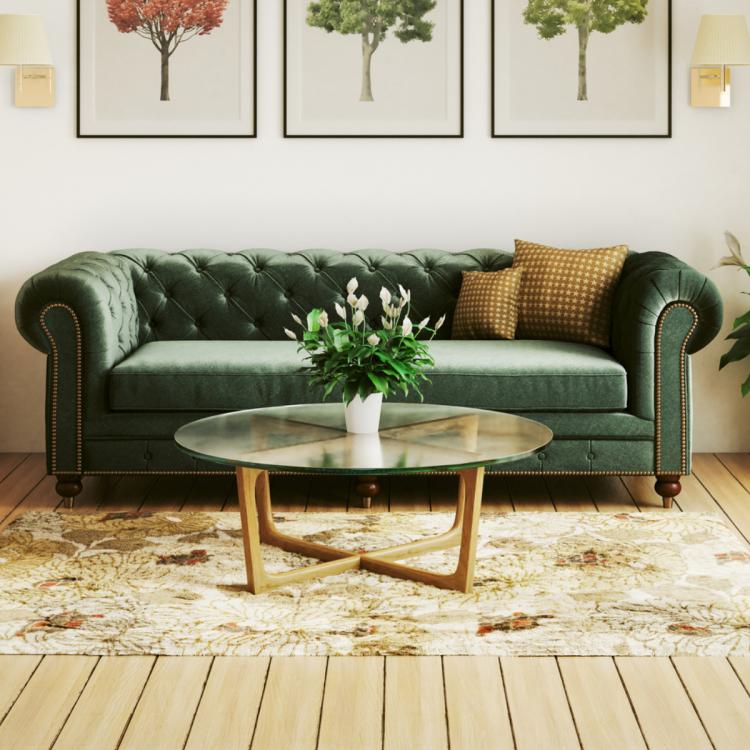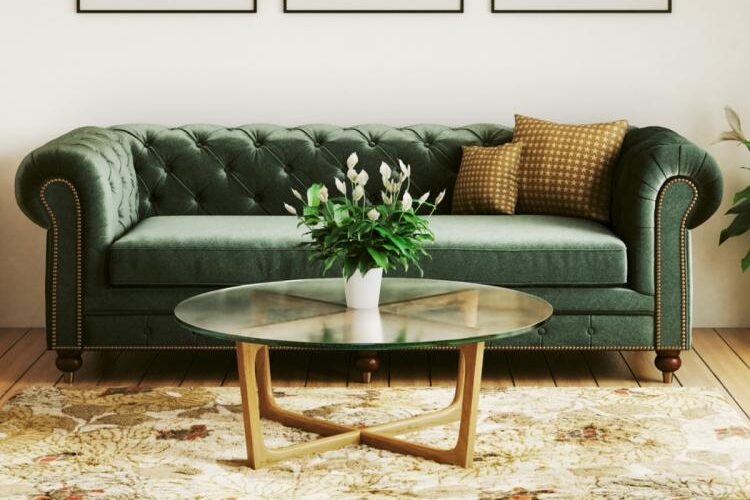Your choice of upholstery for your furniture can be a challenging process. There’s a wide variety of options available on the market. You may have to spend more time than expected, but, in reality, you’ll have to choose between two general types of fabric – natural and synthetic. Either of them has pros and cons. However, choosing the right material for your furniture is very important for the way your upholstery will age and wear. To help you in the (re)search, below, we discuss the differences between man-made and natural fibers, their advantages, and their disadvantages.
Things to consider when choosing upholstery fabric

source: pinterest.com
Upholstery is the materials, including fabric, padding, webbing, and springs, which make up the soft coverings of chairs, sofas, and other furniture. Through the Middle Ages and into the 19th century, when it grew in popularity, and nowadays, a wide variety of materials have been used to upholster furniture, such as hay, horsehair, and wool.
Maintenance needs
The upholstery fabric you choose for your sofa is an important investment, and you wouldn’t want to regret it in a few months or years if you happen to realise you don’t have the time or knowledge of how to maintain it good-looking and clean. Choose the wrong material, and you’ll find yourself with snags or stains, which can become even worse over time. You need to consider its durability, comfort, and style.
Practical needs

source: pinterest.com
When shopping for upholstery, let your practical needs guide you first before you consider how it’ll look. For example, you may love how a silk velvet sofa looks, but it can quickly get damaged if you live in a household with children or pets. If you live in a humid climate, a mildew-resistant fabric is the better option for you. If you’re planning to arrange the furniture piece in a room where it’ll often be used, you’ll need to look for a durable fabric. Consider also if you live with someone with allergies. Fabrics, such as microfiber, are best in this case as it’s lint-free and doesn’t attract dust.
Aging of the fabric
Another mistake is not thinking about how the material will age over time. When you’re shopping, check the manufacturer’s cleaning guidelines and ask questions about its cleaning needs to determine how much maintenance you’re actually prepared to do to protect the piece.
Natural Upholstery Fabrics

source: pinterest.com
Natural fabrics are created from fibres found in nature. They can come from either vegetable or animal sources. Although natural fabrics are more expensive, they have a number of qualities that put them above synthetic ones. They’re versatile, soft, comfortable, and hypoallergenic. They’re also more water-absorbent than synthetic fabrics. A few examples of natural fibers include:
- Cotton – is one of the most popular upholstery materials. It comes in a variety of grades, it dyes easily, and it’s generally easy to care for and clean. However, cotton isn’t very resistant to stretching and wrinkles.
- Wool – derived from sheep fleece, this fiber is soft and resistant to wrinkle. Because it’s durable and comfortable, wool is one of the more expensive natural upholstery fabrics.
- Linen – a plant-derived fiber that ages well and doesn’t fade when displayed under direct sunlight. Linen is easy to clean and wash. Unfortunately, it also wrinkles easily.
Synthetic Upholstery Fabrics
Synthetic fabrics are man-made manufactured fibers through chemical processes. Besides for upholstery, they’re also used in a variety of other products in daily life. Synthetic fibers are sometimes blended with natural ones to create materials that provide the best properties of each type. A few examples of synthetics include:
- Polyester – a petroleum-based fiber that’s strong and easy to maintain. It’s quite resistant to fading, and it’s safe to position it under direct sunlight. You can clean polyester-based upholstery with only upholstery detergents. The material is also waterproof and easy to dye.
- Nylon – introduced in 1939 by DuPont, nylon drapes and dyes very well. This fiber is quite durable and resistant to abrasion and fading.
- Olefin – a material derived from petroleum that resembles wool in appearance. It’s stain-resistant but quite sensitive to heat and prone to fading. You can dry-clean or wash olefin upholstery by hand.
Test the fabric

source: pinterest.com
Whether you choose the right fabrics can also impact the whole look of your interior. You can easily determine if you like an upholstery material if you try it before you buy it. It’s better you go directly to the store instead of shopping online and trying the furniture out yourself. If possible, ask for a swatch and drape it over a furnishing to see how it looks. Don’t forget to also consider the furniture piece itself. Some upholstery textures may not look well on a certain furniture shape. A pattern that looks great on its own may not look that good once it’s chopped and put together on a sofa because of its curves and size.
Keep larger pieces in a solid color or classic neutral so you won’t tire of them over time, and accentuate with smaller statement pieces in bolder colours, textures, and patterns. Think about the other upholstery and furniture in the room and make sure your new pieces match them.
Takeaway
Regardless of the fabric you choose for your upholstery furniture, make sure to get familiar with the cleaning methods and guidelines for the fiber. If you have any doubts, get in touch with a professional upholstery cleaning service. Expert cleaners have access to high-quality products and equipment, and they know how to preserve the fabric of your upholstery as fresh as possible. Upholstered furniture is a comfortable, important, and beautiful part of your home decor, which you should take as much time to clean as you did picking out the right fabric.



